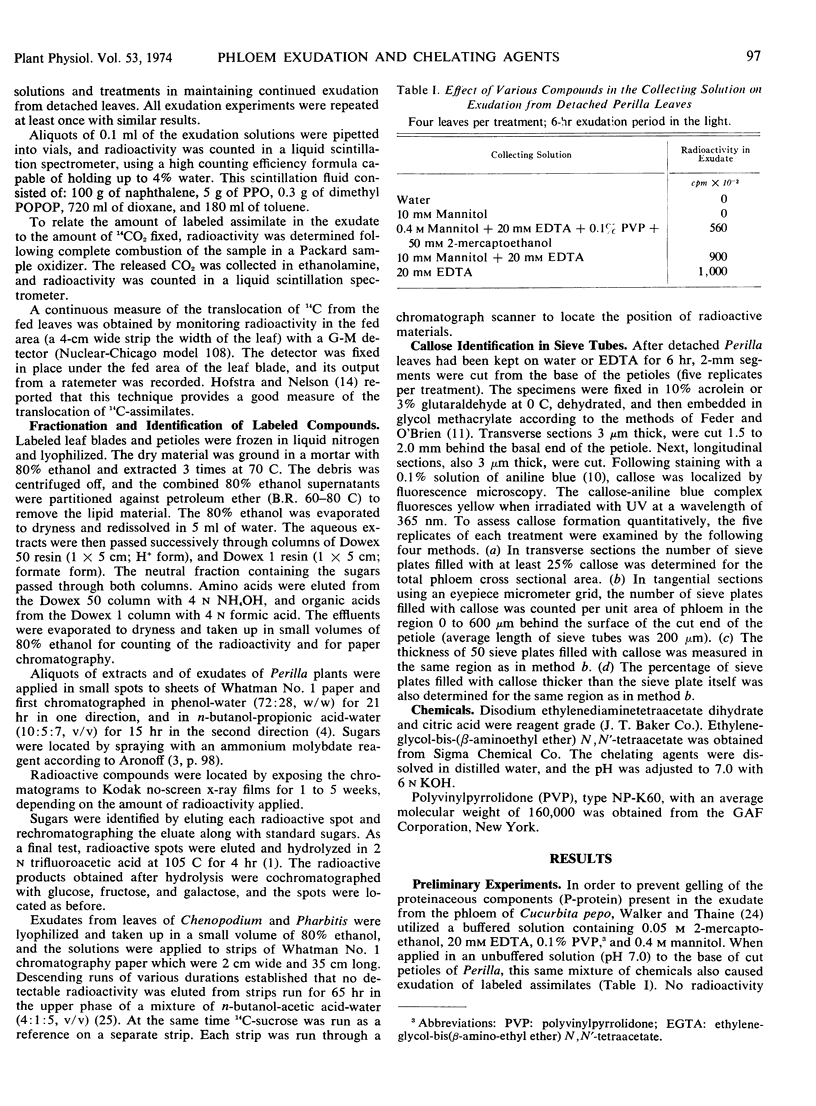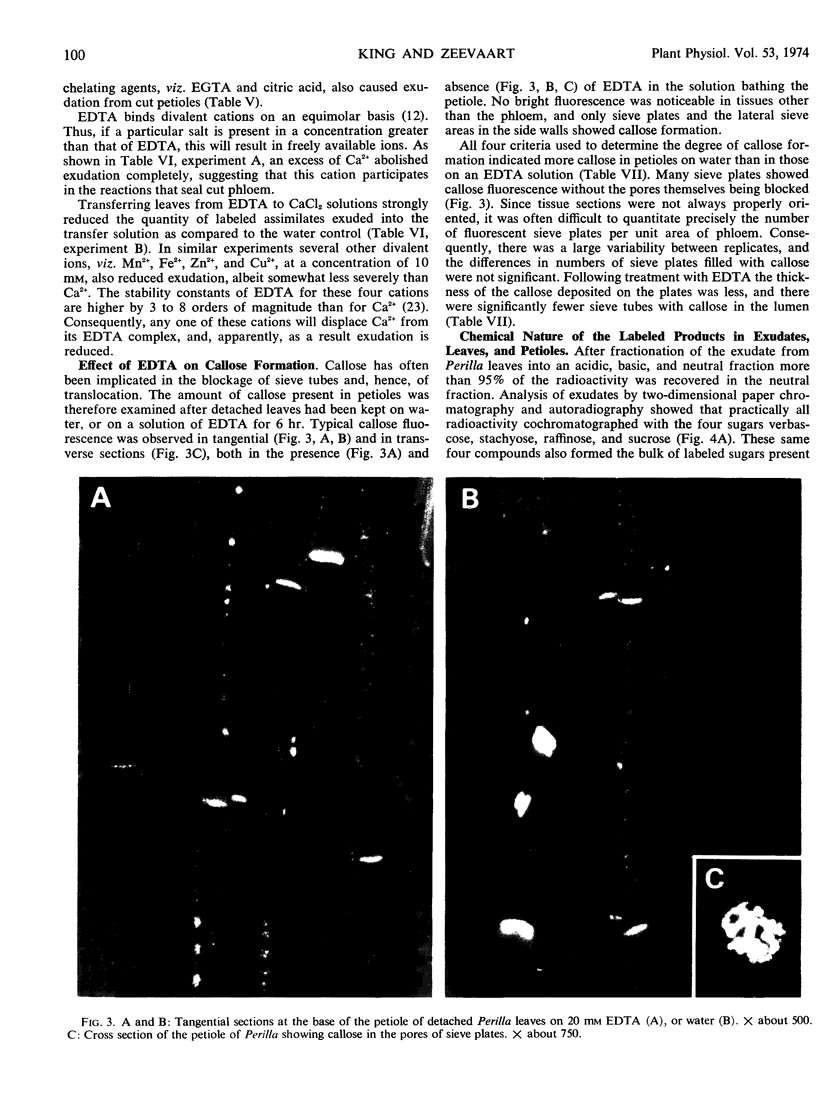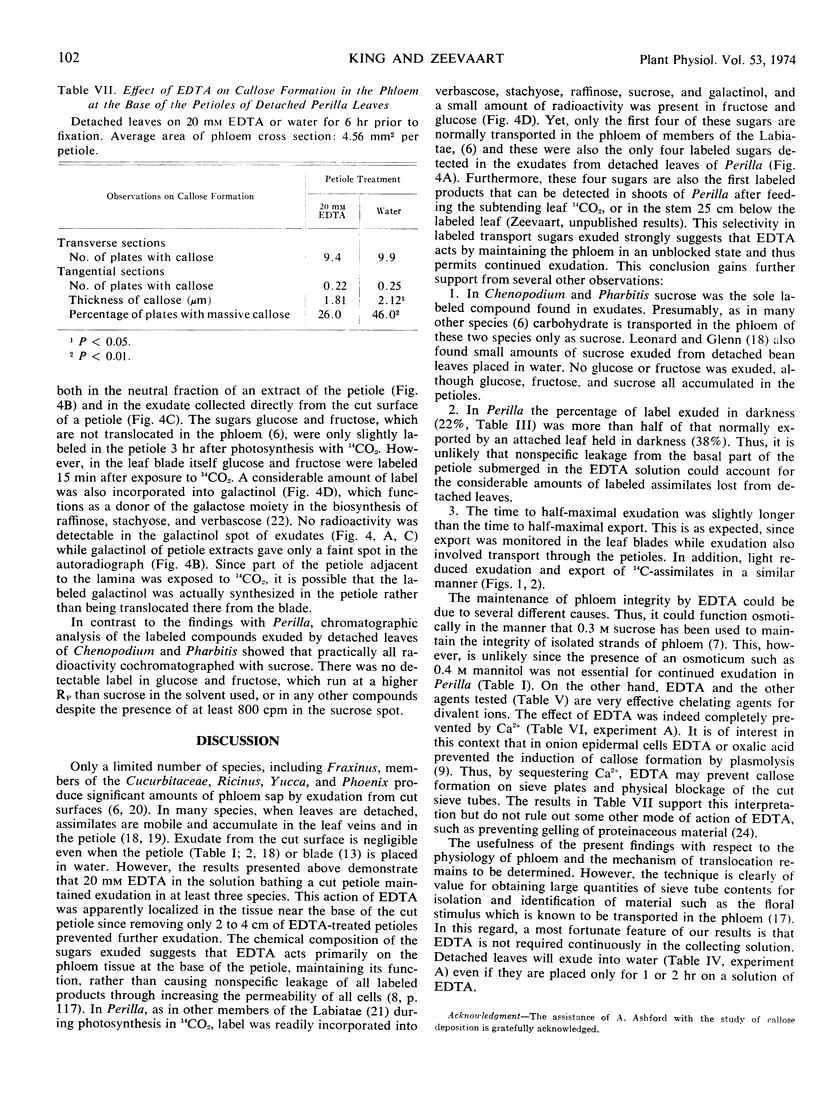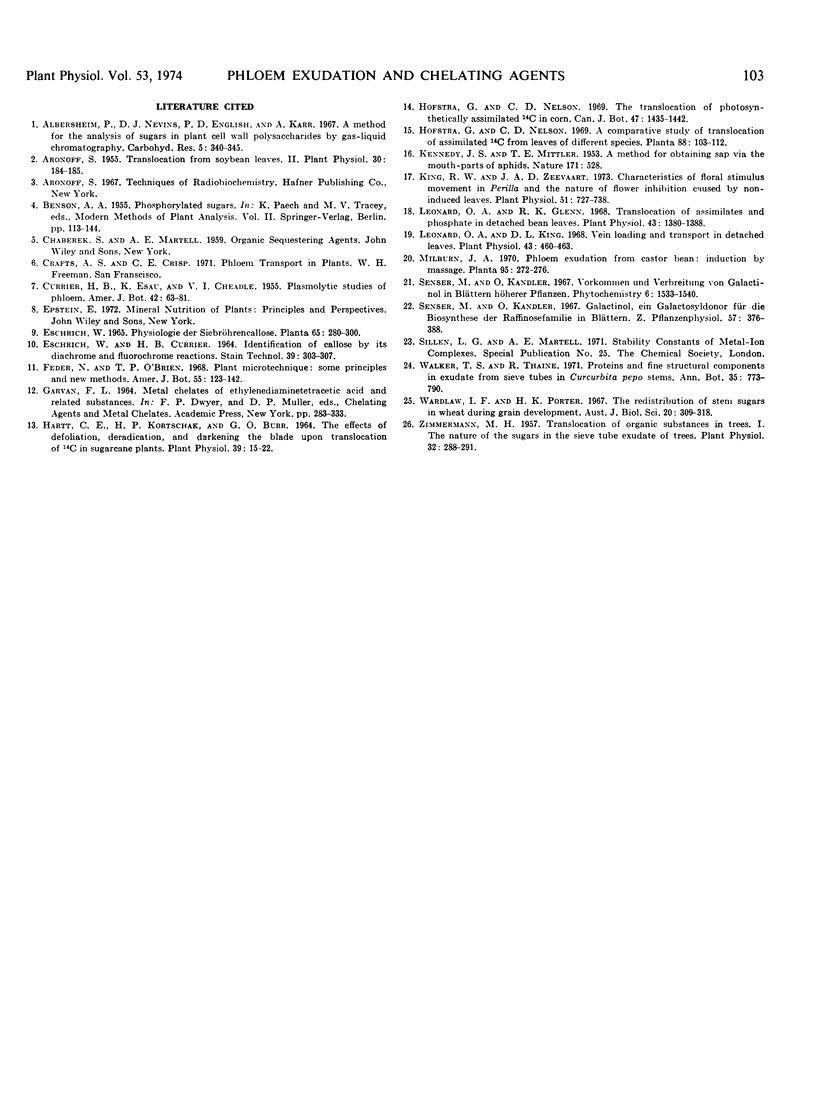Abstract
The photosynthetic assimilates in leaves of Perilla crispa attached to the plant were labeled by treating the leaves with 14CO2. When subsequently detached, these leaves exuded a negligible amount of radioactivity from the cut petiole into water. Ethylenediaminetetraacetate (EDTA), citric acid, and ethyleneglycol-bis (β-aminoethyl ether) N,N′-tetraacetate greatly increased exudation of labeled assimilates into a solution bathing the petioles. The optimal concentration of EDTA was 20 mm, and maximal exudation took place between 2 and 4 hours after excision. Up to 22% of the radioactivity fixed in the leaf was exuded into an EDTA solution as compared to an export of 38% from attached leaves. The amount of radioactivity in the exudate was much reduced at low temperature. Presence of EDTA was required in the collecting solution for only 1 to 2 hours; upon transfer to water, exudation continued as in continuous presence of EDTA. Ca2+ completely inhibited the effect of EDTA.
Anatomical studies indicated that callose formation on the sieve plates near the cut surface of the petioles was less in leaves on EDTA than on water.
More than 95% of the radioactivity exuded by detached leaves was present in the sugars verbascose, stachyose, raffinose, and sucrose, which are translocated in the phloem of Perilla. Labeled glucose, fructose, and galactinol were detected in the leaf blade and petiole, but not in exudates.
The addition of EDTA to a solution bathing the petiole of detached leaves of Chenopodium rubrum and Pharbitis nil also increased the exudation of labeled assimilates. In these two species, label appeared only in a compound that cochromatographed with sucrose.
It is concluded that the radioactive products in the solution are actually exuded by the phloem. Possibly EDTA chelates Ca2+ that otherwise participates in the reactions that seal cut phloem.
Full text
PDF







Images in this article
Selected References
These references are in PubMed. This may not be the complete list of references from this article.
- Aronoff S. Translocation from Soybean Leaves, II. Plant Physiol. 1955 Mar;30(2):184–185. doi: 10.1104/pp.30.2.184. [DOI] [PMC free article] [PubMed] [Google Scholar]
- Hartt C. E., Kortschak H. P., Burr G. O. Effects of Defoliation, Deradication, and Darkening the Blade upon Translocation of C in Sugarcane. Plant Physiol. 1964 Jan;39(1):15–22. doi: 10.1104/pp.39.1.15. [DOI] [PMC free article] [PubMed] [Google Scholar]
- King R. W., Zeevaart J. A. Floral stimulus movement in perilla and flower inhibition caused by noninduced leaves. Plant Physiol. 1973 Apr;51(4):727–738. doi: 10.1104/pp.51.4.727. [DOI] [PMC free article] [PubMed] [Google Scholar]
- Leonard O. A., Glenn R. K. Translocation of assimilates and phosphate in detached bean leaves. Plant Physiol. 1968 Sep;43(9):1380–1388. doi: 10.1104/pp.43.9.1380. [DOI] [PMC free article] [PubMed] [Google Scholar]
- Leonard O. A., King D. L. Vein loading and transport in detached leaves. Plant Physiol. 1968 Mar;43(3):460–463. doi: 10.1104/pp.43.3.460. [DOI] [PMC free article] [PubMed] [Google Scholar]
- WAGGE L. E., MITTLER T. Shell regeneration in some British molluscs. Nature. 1953 Mar 21;171(4351):528–529. doi: 10.1038/171528b0. [DOI] [PubMed] [Google Scholar]




